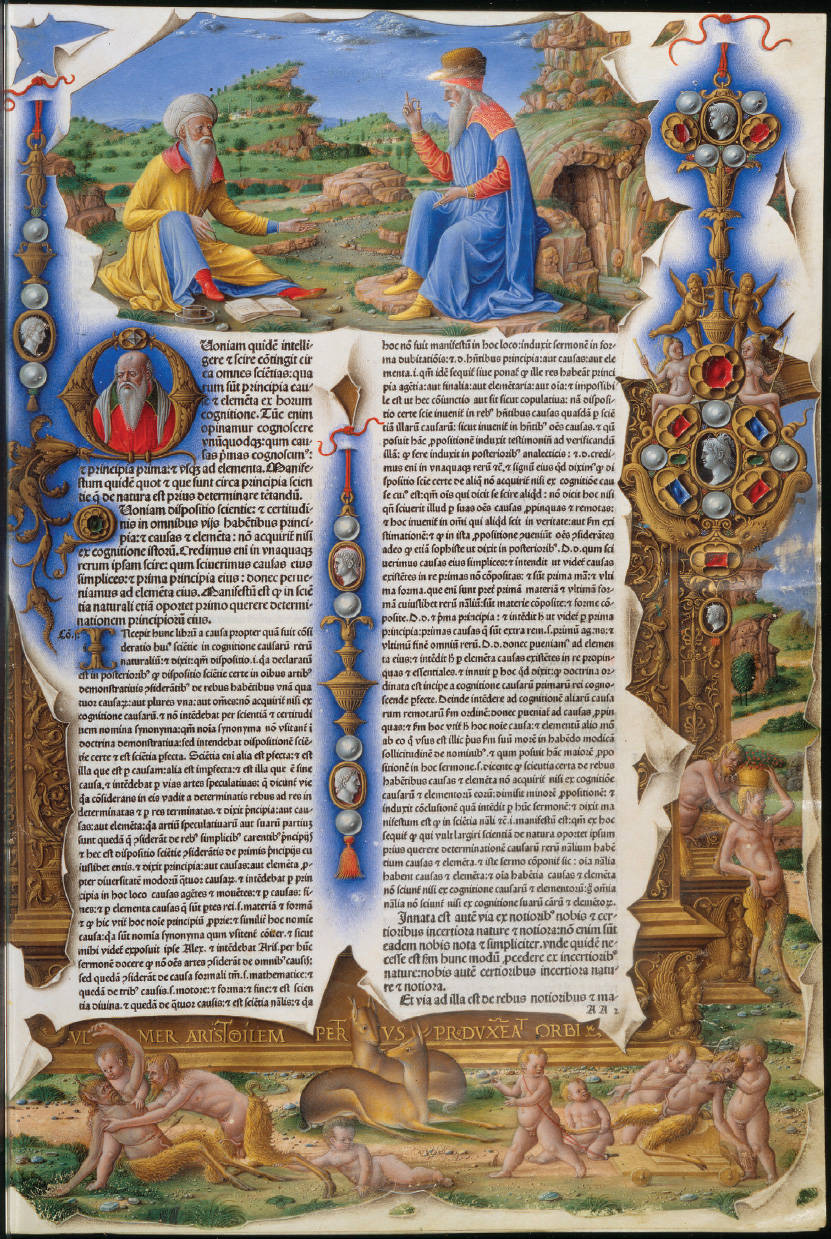Visual Source 12.3
Aristotle and Averroes
Beyond political and commercial relationships, Europeans had long engaged with the Islamic world intellectually as well. Visual Source 12.3 illustrates that engagement in a work by Girolamo da Cremola, a fifteenth-century Italian painter known for his “illuminations” of early printed books. Created in 1483 (only some forty years after the invention of the printing press in Europe), it served as the frontispiece for one of the first printed versions of Aristotle’s writings, translated into Latin, along with commentaries by the twelfth-century Muslim scholar Ibn Rushd, better known in the West as Averroes.
Aristotle, of course, was the great Greek philosopher of the fourth century B.C.E. whose writings presented a systematic and rational view of the world, while commenting on practically every branch of knowledge. The legacy of Greek thought in general and Aristotle in particular passed into both the Christian and Islamic worlds. Ibn Rushd (1126–1198), who wrote voluminous commentaries on Aristotle’s works and much else as well, lived in Muslim Spain, where he argued for the compatibility of Aristotelian philosophy and the religious perspectives of the Quran. While that outlook faced growing opposition in the Islamic world, Aristotle’s writings found more fertile ground among European scholars in the new universities of the twelfth and thirteenth centuries, where they became the foundation of university curricula and nourished the growth of “natural philosophy.” In large measure it was through translations of Ibn Rushd’s Arabic commentaries on Aristotle that Europeans regained access to the thinking of that ancient philosopher. A long line of European scholars defined themselves as “Averroists.”
The painting in Visual Source 12.3 is presented as a parchment leaf, torn to disclose two worlds behind Aristotle’s text. At the top in a rural setting, Aristotle in a blue robe is speaking to Ibn Rushd wearing a long white beard and dressed in a yellow robe with a round white turban. The bottom of the painting depicts the world of classical Greek mythology. The painted jewels, gems, and pearls testify to the great value placed on such illuminated and printed texts.

Question
What might the possession of such a book say about the social status, tastes, and outlook of its owner?
Question
What overall impression of Renaissance thinking about the classical world and the world of Islam does this painting convey?
Question
Notice the gestures of the two men at the top as well as the pen in Ibn Rushd’s hand and the book at his feet. How might you describe the relationship between them?
Question
What made it possible for at least some European Christians of the Renaissance era to embrace both the pagan Aristotle and the Islamic Ibn Rushd?